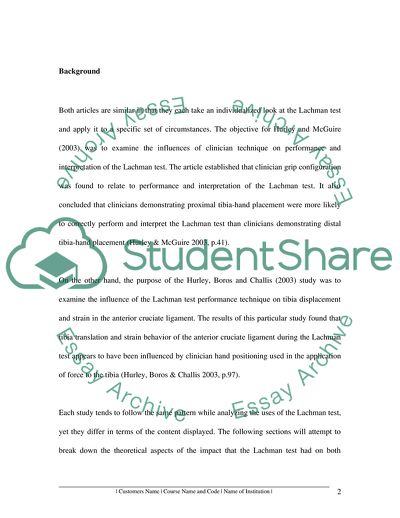Cite this document
(An Analysis of Articles Relating to the Lachman Test Literature review, n.d.)
An Analysis of Articles Relating to the Lachman Test Literature review. https://studentshare.org/psychology/1708885-an-analysis-of-research-that-critiques-a-physiotherapy-assessment-toolmethod
An Analysis of Articles Relating to the Lachman Test Literature review. https://studentshare.org/psychology/1708885-an-analysis-of-research-that-critiques-a-physiotherapy-assessment-toolmethod
(An Analysis of Articles Relating to the Lachman Test Literature Review)
An Analysis of Articles Relating to the Lachman Test Literature Review. https://studentshare.org/psychology/1708885-an-analysis-of-research-that-critiques-a-physiotherapy-assessment-toolmethod.
An Analysis of Articles Relating to the Lachman Test Literature Review. https://studentshare.org/psychology/1708885-an-analysis-of-research-that-critiques-a-physiotherapy-assessment-toolmethod.
“An Analysis of Articles Relating to the Lachman Test Literature Review”. https://studentshare.org/psychology/1708885-an-analysis-of-research-that-critiques-a-physiotherapy-assessment-toolmethod.


